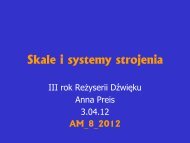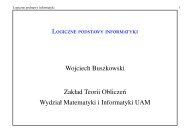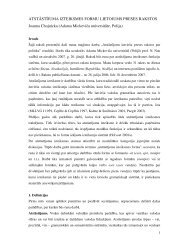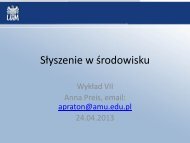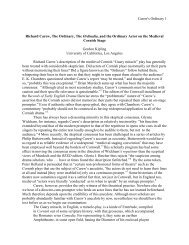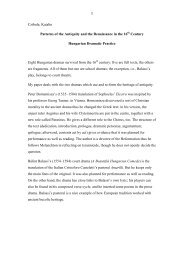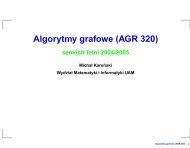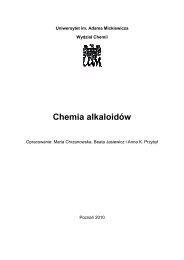Amir Weiner Getting to Know You
Amir Weiner Getting to Know You
Amir Weiner Getting to Know You
Create successful ePaper yourself
Turn your PDF publications into a flip-book with our unique Google optimized e-Paper software.
26 AMIR WEINER AND AIGI RAHI-TAMM<br />
In gathering this precious information, no means were considered<br />
<strong>to</strong>o extreme. Penetrating the ranks of the nationalist undergrounds was a<br />
formidable task given their cohesion, brutality, organizational structure,<br />
and methods—which often mirrored those of the NKVD—and a supportive<br />
rural population that alerted them in advance <strong>to</strong> the approach of strangers<br />
<strong>to</strong> the villages. Hence relatives of known guerillas and adolescent children<br />
were considered particularly valuable sources. 72 If Khrushchev was right <strong>to</strong><br />
remind his subordinates that in the village everybody knows everything about<br />
everyone (“It is inconceivable that a peasant does not know the bandits in his<br />
midst. If a goose is missing, a peasant knows who s<strong>to</strong>le it, whether it was Ivan<br />
or Petro who did it, just as he knows who steals his apples or honey. They<br />
know each other and they will tell you”), 73 then children were fountains of<br />
knowledge on the identity and whereabouts of the guerrillas.<br />
As always, ethnonational strife offered the NKVD an opportunity <strong>to</strong><br />
get a foot in the door. Poles, in particular, figured highly in assisting the<br />
NKVD, the more so in ethnically mixed communities and after the eruption<br />
of extermina<strong>to</strong>ry campaigns pursued by the communities’ underground<br />
forces. Difficulties only piled up in the wake of the mass departure of Poles<br />
<strong>to</strong> newly established Poland in 1944–47, which wiped out valuable networks.<br />
Tellingly, the authorities pursued the surveillance of the Polish evacuees all<br />
the way <strong>to</strong> Poland. Nor did they have problems in recruiting Polish agents,<br />
residents (veteran agents directing a group of informants), and informants. In<br />
June 1946, more than 60 percent of the 550 agents in the Ministry of State<br />
Security (MGB) Second Department who were engaged in surveillance of the<br />
Polish community in Vilnius were recent recruits. 74<br />
Equal Opportunity Recruitment<br />
Was there a pro<strong>to</strong>type of an informant during this era? The surveillance<br />
organs’ own data imply that aside from a common pattern of a compromised<br />
72 Chebrikov, Is<strong>to</strong>riia, 472; Jeffrey Burds, “Agentura: Soviet Informants’ Networks and the<br />
Ukrainian Underground in Galicia, 1944–1948,” East European Politics and Society 11, 1 (1997):<br />
115; Pearu Kuusk, Nõukogude võimu lahingud Eesti vastupanuliikumisega: Banditismivaste<br />
võitluse osakond aastatel 1944–1947 (Tartu: Tartu Ülikooli kirjastus, 2007), 45.<br />
73 Tomilina, Nikita Khrushchev, 1:86.<br />
74 For reports on reactions of Polish citizens in western Ukraine <strong>to</strong> the announcement of the<br />
population exchange in the fall of 1944, see TsDAHOU f. 1, op. 23, spr. 892, ark. 156–65.<br />
On the number, composition, and activities of the Polish sec<strong>to</strong>r in the Lithuanian MGB, see<br />
LYA, f. K-1, ap. 2, b. 3, ll. 63–87. For a personal account of a young Pole who was recruited<br />
by the NKVD, including a description of his training as an informant, see Waldemar Lotnik<br />
with Julian Preece, Nine Lives: Ethnic Conflict in the Polish–Ukrainian Borderlands (London:<br />
Serif, 1999), 132–57. On the impact of the mass departure of Poles on the surveillance system<br />
in western Ukraine, see Burds, “Agentura,” 116–19.



